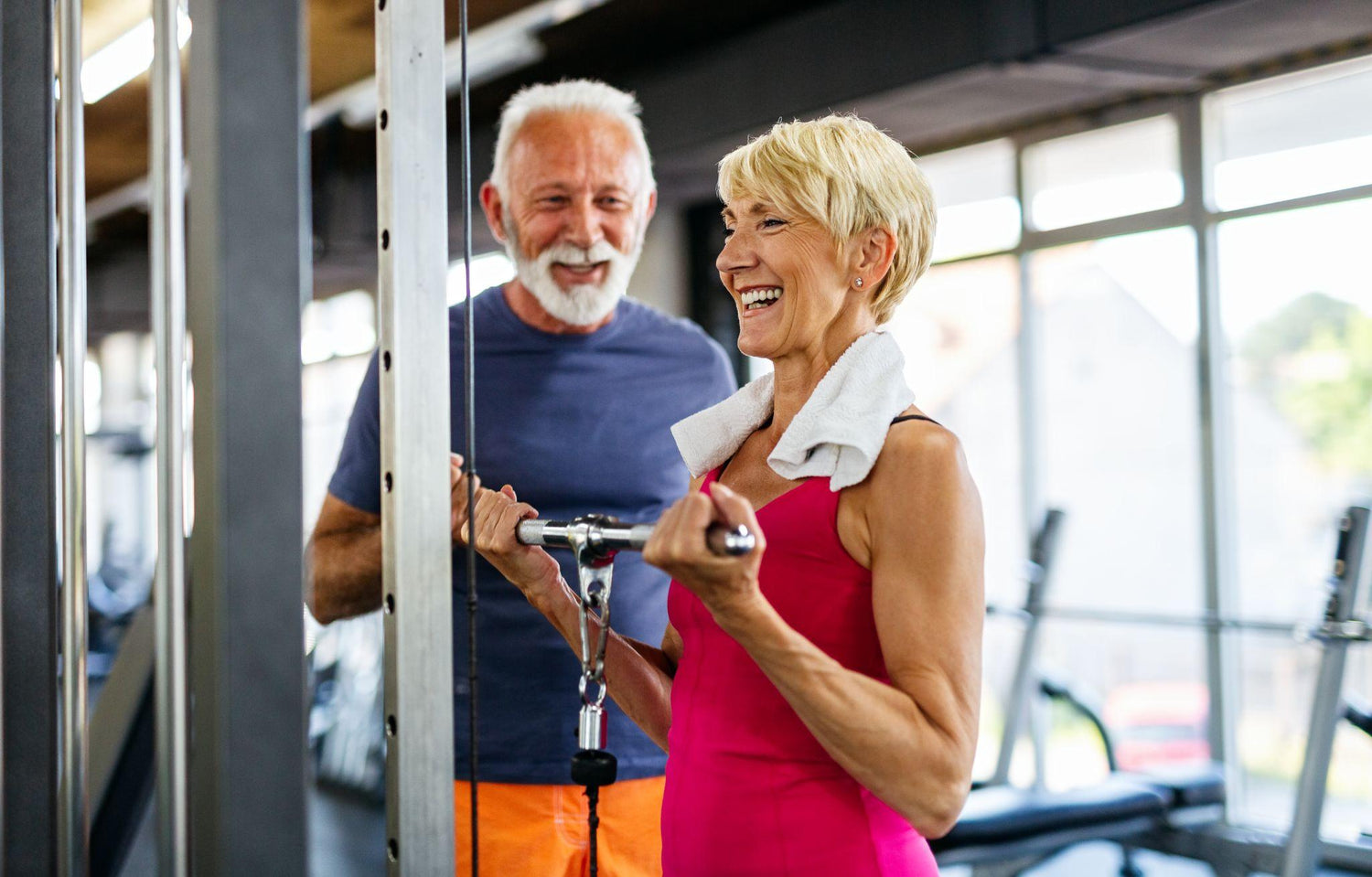
The Impact of Weightlifting on Bone Health: How Strength Training Prevents Osteoporosis

Osteoporosis affects more than 10 million Americans, leading to fragile bones and an increased risk of fractures—especially in older adults.1 As bone density naturally declines with age, the need for prevention becomes critical. One powerful and research-backed solution? Strength training.
Let’s explore the impact of weight-bearing exercise on long-term bone health, uncovering how strength training helps prevent osteoporosis and build resilience from the inside out.
Understanding Osteoporosis and Bone Loss
Osteoporosis is a condition characterized by low bone density and deteriorating bone structure, significantly increasing the risk of fractures. The hips, spine, and wrists are among the most vulnerable areas. Bone loss typically begins around age 40, progressing at about 1% per year unless counteracted by weight-bearing activities or other interventions.¹
This degenerative process can affect anyone but is especially common in postmenopausal women and older adults. Because only bones that are actively loaded during exercise will benefit, it's essential to include weight-bearing physical activity that targets the whole body—not just the lower limbs.
A well-rounded regimen that includes exercises to strengthen bones across all major muscle groups is vital to support lifelong skeletal health.
How Weightlifting Builds Bone
So does weightlifting prevent osteoporosis? Multiple studies say yes. When muscles contract against resistance, they pull on bone tissue, triggering a biological response that activates bone-forming cells known as osteoblasts. This mechanical stress from strength training promotes improved bone quality, density, and overall architecture.²
Unlike everyday movements, weight-bearing exercise like lifting weights exerts a higher load on bones, signaling them to grow stronger. Such loading exercises are particularly effective in strengthening areas prone to osteoporotic fractures, including the spine and hips.³
Whether you're an older adult or just beginning your fitness journey, integrating weightlifting for osteoporosis prevention into your routine can yield measurable gains in skeletal strength. The key is to challenge the bones consistently—without overloading them too soon—and to use proper form and support.
Using essential weightlifting gear like padded belts and grip-enhancing tools such as Versa Gripps can help minimize injury risk while ensuring your sessions are both safe and effective.
Real-World Evidence and Results

Even more impressively, a 2023 study showed that low-load, high-rep resistance exercises were also effective in preserving BMD in active postmenopausal women.⁴
These results are further bolstered by a systematic review published in BioMed Research International, which notes that weight-bearing activities need to exceed the mechanical loads experienced during daily living to stimulate bone growth.⁵
This proves that progressive resistance training is not only safe for older populations—it’s a powerful tool for maintaining health.
Weight-Bearing Exercises for Bone Loss
When it comes to weightlifting and osteoporosis prevention, focusing on compound lifts is key. These exercises create significant stress on bone tissue and encourage bone formation in high-risk areas:
- Squats: Strengthen the hips, thighs, and lumbar spine.
- Deadlifts: Load the spine and pelvis to improve bone strength in the back and hips.
- Overhead Press: Enhances density in the shoulders, arms, and upper spine.
- Lunges: Build lower-body strength while challenging balance and stability—important for hip and femur bone density.
These are among the most effective exercises to strengthen bones, but they must be performed with correct form and proper progression. If you're new to resistance training, start light and build gradually.
How to Start a Safe Strength Training Routine
For those wondering how to begin a bone-friendly workout plan, a few guidelines will help set the foundation:
- Train 2–3 times per week.
- Target major muscle groups using multi-joint movements.
- Start with a weight you can lift for two sets of 8–12 repetitions each with good form.
- Progressively increase load or volume over time.
Even low-intensity programs that follow these principles can yield significant gains in BMD. But be sure to use weightlifting gear that supports your biomechanics. For example, Versa Gripps FITPRO is ideal for beginners with smaller hands, providing grip assistance without compromising comfort or control.
Stronger Bones Start with Smart Lifting

Osteoporosis may be common, but it isn’t inevitable. By incorporating weight-bearing physical activity—especially strength training—into your lifestyle, you can actively improve your bone density, reduce the risk of osteoporosis, and enhance your quality of life. And it’s never too late to start—even senior citizens can prevent bone loss with resistance exercises.
Be sure to focus on good form, progressive overload, and using the best weightlifting gear that can support your performance and protect your joints. For added safety and control during every lift, Versa Gripps are a smart addition to any bone-strengthening workout routine. Because when it comes to aging well, strong bones are a foundation worth investing in.
Sources
- Harvard Health Publishing. Slowing bone loss with weight-bearing exercise.
- Hong AR, Kim SW. Effects of Resistance Exercise on Bone Health. Endocrinol Metab. 2018;33(4):435-444. doi: 10.3803/EnM.2018.33.4.435.
- Harvard Health Publishing. Strength training builds more than muscles.
- Academy of Orthopaedic Physical Therapy. The role of strength training in preventing osteoporosis: Functional exercises and evidence-based benefits.
- Benedetti MG, Furlini G, Zati A, Mauro GL. The effectiveness of physical exercise on bone density in osteoporotic patients. Biomed Res Int. 2018;2018:4840531. doi: 10.1155/2018/4840531.